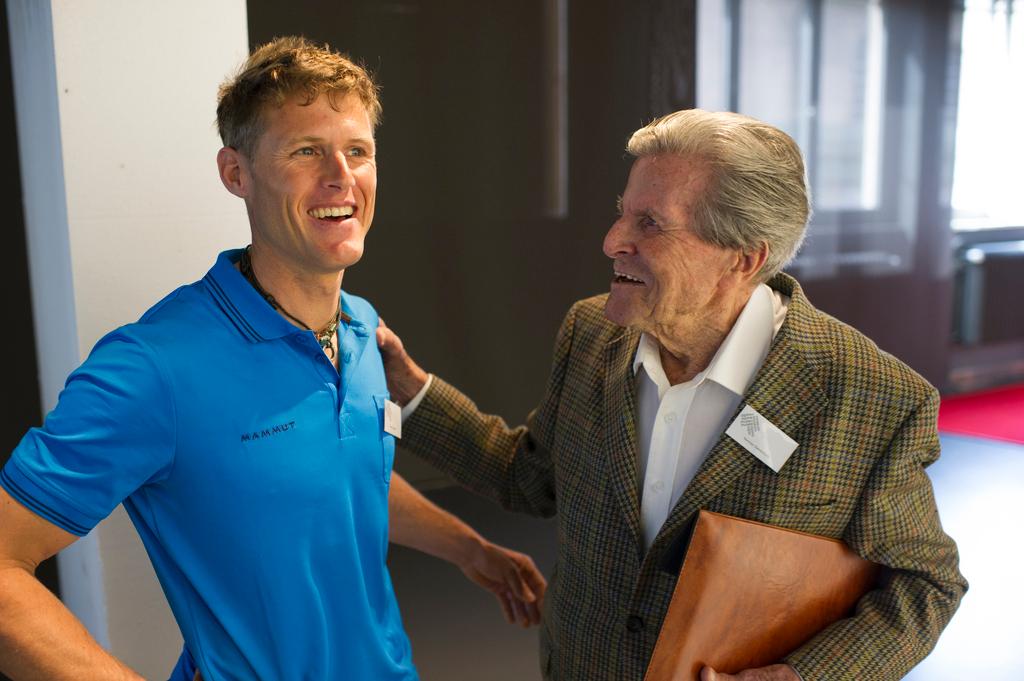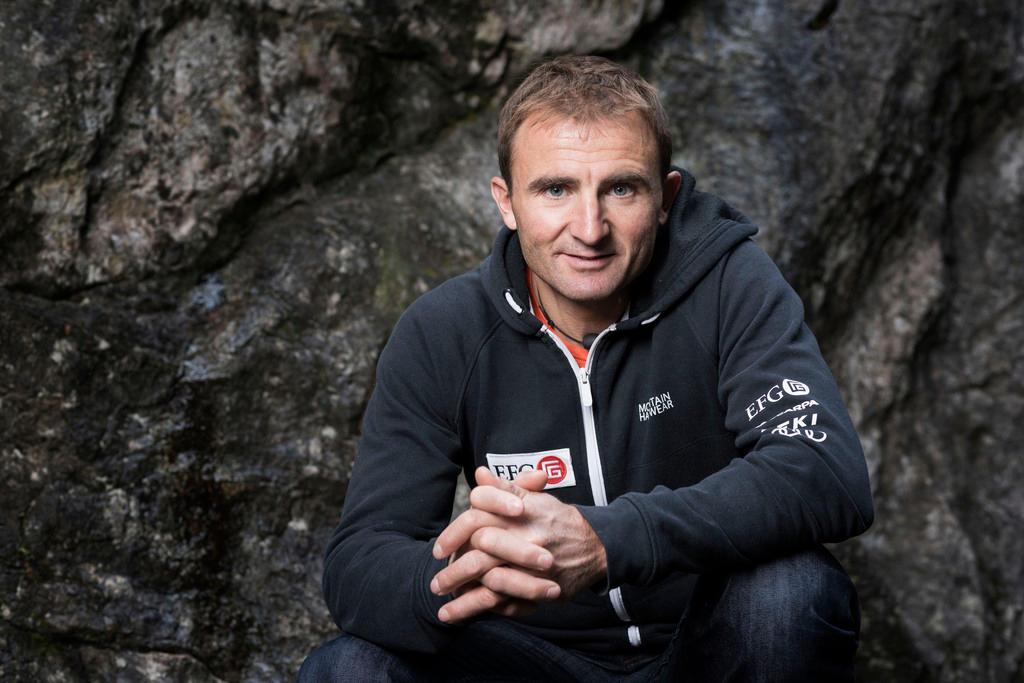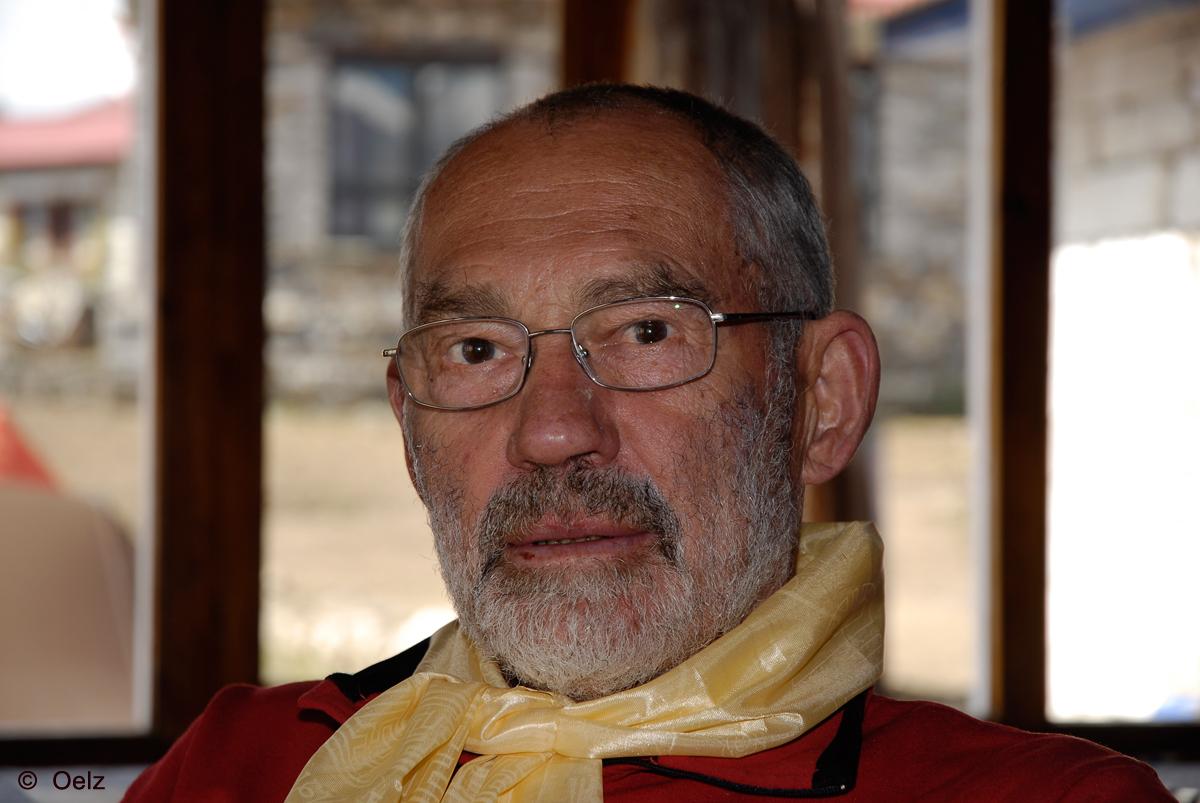Everest pioneer Norman Dyhrenfurth dies aged 99

Swiss-American mountaineer and film maker Norman Dyhrenfurth, leader of the successful American Mount Everest expedition of 1963, died on Sunday in a hospital in Salzburg. He was 99.
If you want to go down in Himalayan history, you have to do more than just climb an 8,000-metre peak, said the Neue Zürcher ZeitungExternal link on Wednesday. Dyhrenfurth, explained other German-language newspapers, certainly did that.
Two years ago, swissinfo.ch visited him at home in Salzburg, Austria, and heard from a man who inspired generations on both continents and who forever changed American culture through his achievements:

More
The Swiss adventurer who scaled Hollywood and Everest
Dyhrenfurth had mountain climbing in his blood. He was born in 1918 in Breslau, Germany, to Himalayan explorers Günter Oskar Dyhrenfurth and Hettie Dyhrenfurth. They emigrated, first to Austria in 1923, then two years later to Switzerland, where they became citizens. Norman emigrated to the United States in 1937, where his service in the army enabled him to gain joint US-Swiss citizenship.
In 1960, Dyhrenfurth – then professor of film at the UCLA School of Theater, Film and Television – was part of the 1952 Swiss Mount Everest Expedition. Eight years later, he was cameraman for the Swiss expedition to Dhaulagiri. After that climb, he approached the government of Nepal about obtaining a permit for an American expedition to climb Mount Everest.

Everest
In May 1961, he received a permit from the Nepalese authorities for an American expedition to climb Everest in the spring of 1963. He recruited a team of climbers that included Jake Breitenbach, Jim Whittaker, Willi Unsoeld, Lute Jerstad, Tom Hornbein, Dave Dingman and Barry Bishop. Sherpa Nawang Gombu was also part of the team.
On March 23, 1963, Breitenbach was killed in the collapse of a ridge of ice just above Everest Base Camp. Dyhrenfurth’s style of leadership was democratic and team-oriented, so he called a meeting, discussed the tragedy, let everyone speak, and when the decision was made to continue, the team remained intact.
On May 1, Whittaker and Gombu reached the summit of Mount Everest by the South Col route used by the successful British expedition of 1953.
Dyhrenfurth, with a heavy camera in his backpack, almost made it to the top. The spectacular film he made of the climb, “Americans on Everest”, was used by the National Geographic Society to open its 1965 television season.
On July 8, 1963, President Kennedy presented the National Geographic Society’s Hubbard Medal to Dyhrenfurth at a ceremony in the flower garden of the White House. The surviving members of the expedition were also present. Kennedy told Dyhrenfurth that “we followed your actions with the greatest pride”.
Dyhrenfurth spent his later years in Salzburg with his partner Maria “Moidi” Sernetz.

In compliance with the JTI standards
More: SWI swissinfo.ch certified by the Journalism Trust Initiative












You can find an overview of ongoing debates with our journalists here . Please join us!
If you want to start a conversation about a topic raised in this article or want to report factual errors, email us at english@swissinfo.ch.